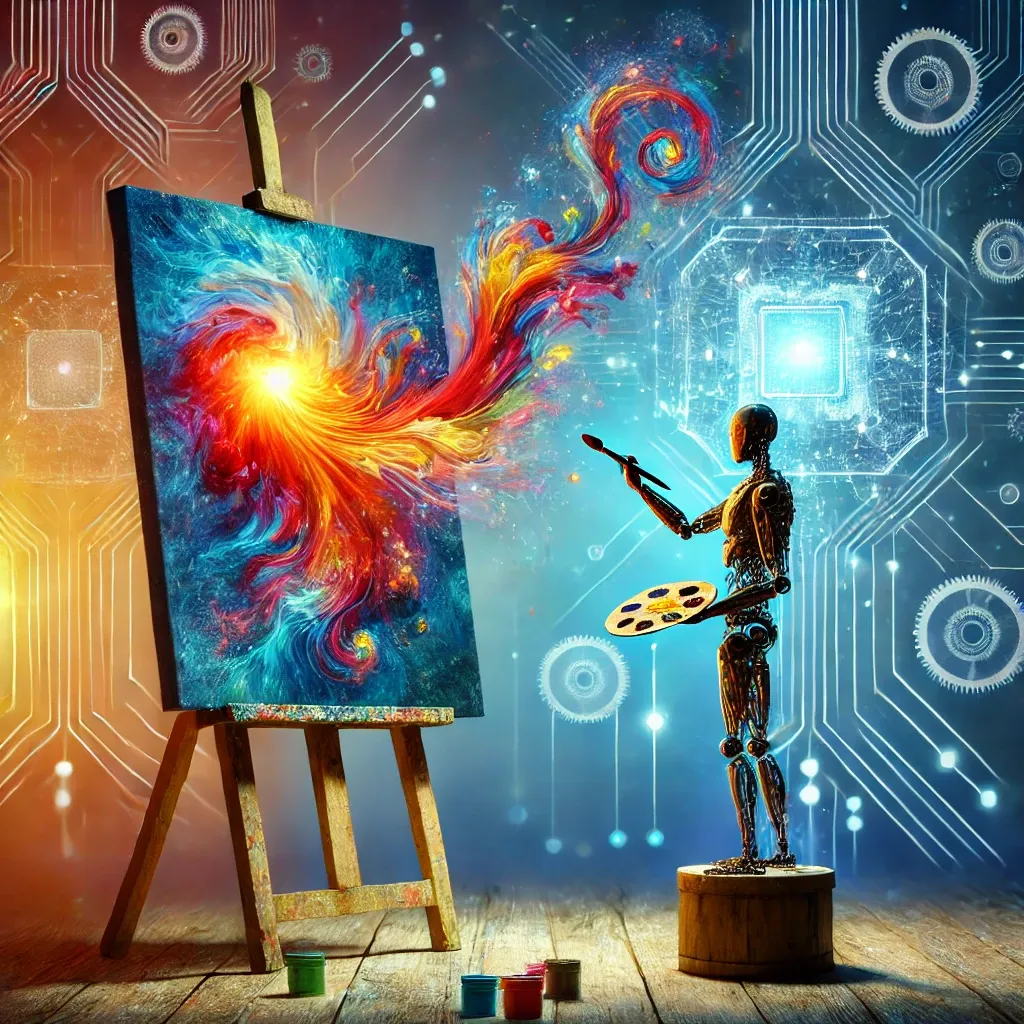Art has always been a profound expression of human creativity, emotions, and experiences. However, in the age of artificial intelligence (AI), this creative realm is witnessing a transformation that raises intriguing questions about authenticity, originality, and the role of artists in a world where machines can also create. Let’s dive into the ongoing debate about creativity and authenticity in art and design and analyze how AI-generated art compares to human creativity.
Introduction: The Rise of AI in Art
Imagine a world where masterpieces are generated not by a human hand, but by an algorithm. AI tools like DALL-E, MidJourney, and DeepArt have made this a reality. From hyper-realistic paintings to abstract digital designs, AI-generated art is gaining popularity. But does this technological advancement enhance creativity or undermine the human essence of art?
The Essence of Human Creativity
Human creativity is deeply rooted in emotions, culture, and individual experiences. Artists often draw inspiration from personal struggles, societal changes, or historical contexts. For instance, Vincent van Gogh’s swirling skies in Starry Night reflect his turbulent emotions. Such deeply personal connections are challenging for AI to replicate.
Key Features of Human Creativity:
- Emotional depth and storytelling.
- Imperfections that make art unique.
- Cultural and historical significance.
AI-Generated Art: Efficiency Meets Innovation
AI, on the other hand, leverages vast datasets to generate art in minutes. It can mimic various styles, experiment with design techniques, and even create entirely new aesthetics. For example, AI can analyze thousands of Renaissance paintings and produce a work in the same style with unmatched precision.
Advantages of AI in Art:
- Speed and scalability.
- Accessibility for non-artists.
- Ability to innovate by blending styles and concepts.
However, critics argue that AI lacks the emotional depth and intent that define true art. Can an algorithm—no matter how advanced—capture the essence of grief, joy, or love?
Creativity vs. Authenticity: The Core Debate
The debate boils down to two critical aspects:
1. Creativity:
Proponents of AI-generated art claim that creativity is not limited to humans. Machines can create “new” by combining existing ideas in unique ways.Opponents argue that AI does not create—it computes. Creativity requires intent, context, and emotion, which AI lacks. 2. Authenticity:
Human-made art often carries the artist’s signature—not just physically but emotionally and contextually. AI-generated art, created from datasets, raises concerns about originality and copyright.Can art be authentic if it is generated by a machine trained on pre-existing works? The Collaborative Future
Instead of pitting humans against AI, many believe in a collaborative future. AI can serve as a tool to augment human creativity. For example:
- Concept Generation: Artists can use AI to brainstorm ideas or visualize concepts faster.
- Skill Enhancement: AI tools can help artists experiment with new techniques and styles.
- Accessibility: AI democratizes art, enabling people without traditional skills to express themselves creatively.
Renowned artist Refik Anadol, for instance, combines AI with human vision to create mesmerizing data-driven installations.
Ethical Concerns and Copyright Issues
The rise of AI-generated art also brings ethical challenges:
- Copyright Infringement: AI models are trained on existing artworks, often without the original creators’ consent.
- Job Displacement: Many fear that AI could replace human artists in industries like design and advertising.
- Bias in Datasets: AI-generated art can unintentionally reflect societal biases present in its training data.
Addressing these issues requires clear guidelines and collaboration between artists, technologists, and policymakers.
Conclusion: A New Renaissance?
The creative war between human artists and AI-generated art is not a battle of supremacy but an exploration of possibilities. While AI can produce breathtaking pieces, it lacks the emotional depth and intent that define human creativity. On the other hand, AI’s capabilities can inspire and empower human artists to push boundaries.
Ultimately, art’s essence lies in its ability to connect, provoke, and inspire. Whether created by humans, AI, or a combination of both, the future of art promises to be as dynamic and diverse as creativity itself.
